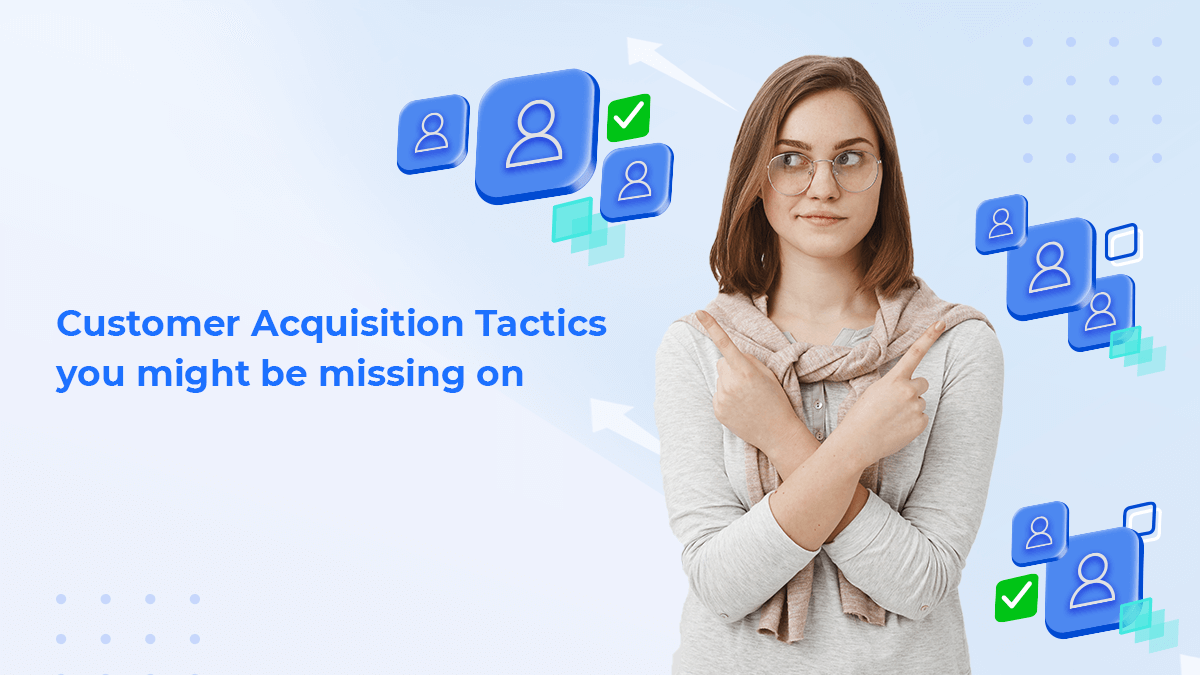
“For e-commerce startups, the most difficult thing is focus. It’s easy to focus on a niche for your products, but very difficult to focus on a ‘niche audience.”
– says Brian Zeng, CMO of OwnOnly.
The cost of attracting new customers has risen by 60% in the last six years. Marketing is becoming more costly, consumers are losing faith in brands, and businesses should simply give up… right?
Unfortunately, the first two claims are correct; however, the last one is not.
Companies shouldn’t give up — they should simply get smarter. (You have heard the saying, “Work smarter, not harder,” haven’t you?)
You’re not alone if you’re looking for ways to boost your customer acquisition. Two of the most widely cited marketing goals by businesses are lowering consumer acquisition costs and demonstrating the ROI of marketing activities.
You’ll learn the principles of consumer acquisition in this article. You’ll be able to develop an acquisition plan that is so adaptable that it can endure the test of time and change trends by the end.

Generally, marketers and business owners often split the funnel into three stages, it is explained below:
- (Awareness) Top of the funnel: Your aim at this point is to raise awareness and generate leads among your target audience. Usually, you’ll target a broad, diverse audience with curiosity about your company’s brand or goods but no strong intention to purchase. A cake company might use the hashtag #deliciouscakes to draw attention to their posts and products among those looking for them.
- (Consideration) Middle of the funnel: Consumers who travel from the top to the middle of the funnel have typically taken an action that means they are considering a purchase, such as entering an email list or following your brand on social media. It is now your responsibility to persuade them to become customers.
- (Purchase) Bottom of the funnel: This is the last step of the sales process before a prospect becomes a customer. They’ve generally taken some behavior that shows a strong desire to buy, such as adding a product to their cart or registering for a free trial. Businesses also give offers, such as a discount code, at this point to convert prospects who are on the verge of making a purchase.
There are numerous methods for a business to find and convert these new customers, especially online. It’s easier to monitor how your company acquires new customers with digital marketing, discover and test new marketing strategies, and scale the ones that work.
Customer Acquisition vs. Customer Acquisition in E-Commerce
They’re both the same. The latter is intended to draw consumers to eCommerce stores, while the former can be applied to any market strategy.
The method of persuading people to become your customers is known as customer acquisition.
Customer acquisition in E-Commerce is described as the process of attracting new customers to your online store through the use of a combination of digital marketing strategies such as SEO, PPC, email marketing, content marketing, and other types of digital advertising.
Why do you need a customer acquisition strategy?
Gaining new customers for your company is vital to increase your sales, whether you are an e-commerce startup or a large corporation. This top-of-the-funnel momentum is what drives your company’s future growth. Furthermore, a growing client base is a strong business case, as it serves as evidence of traction for the company to investors and the general public.
However, how precisely one acquires consumers has perplexed advertisers for decades.
Although lead generation can be automated in several ways, turning leads into paying customers requires deep thinking. Since thousands of marketers have gone before you and streamlined the process, why not follow some of the tried-and-true methods that have worked for them?
Here are 5 consumer acquisition techniques that have been proven to work.
- Define Your Target Audience The first and most important step is to find the right users or potential customers for your company. Your target audience is the community of people who are most likely to want your product or service and, as a result, can see your advertising campaigns. Age, gender, income, place, interests, and various other factors can all influence who your target audience is.
Most likely, the product is the ideal solution to an issue that a specific demographic of customers is experiencing. It’s just a matter of figuring out who they are and concentrating the customer acquisition efforts on them.
You’re probably restricting your ability to market your brand effectively if you don’t have a target customer in mind. You’re better off seeking a niche market if the products don’t satisfy a common need.
- Focus on SEO You can work on SEO after you’ve built your online presence by creating insightful content. You can use SEO research to find out what users are interested in and how to create content that explores and catches that interest. By concentrating on SEO and legitimate link building, you can create important, useful content that people want to share, resulting in digital word of mouth. This will aid in the improvement of the content’s search engine rankings. As a result, the content will become more accessible and discoverable to your target audience.
The first stage of the customer acquisition funnel has a lot to do with improving search rankings and brand awareness. Using industry-related keywords and backlinks from authoritative websites are just a few of the more basic SEO strategies.
- Improve Website and Email EngagementAlthough this is a technique that predates the internet, it is still one of the most successful consumer acquisition approaches. It allows you to stay in front of your target audience while also promoting your content, discounts, and product details. It’s also the quickest and most convenient way to communicate with and attract new customers.

Sending personalized emails to people based on where they are in the customer acquisition process is a perfect way to do this. As a result, anyone in the first two phases is more likely to be suitable for content that will initiate customer interaction.
- Brands Can Bond, TooLike all forms of relationships, consumers choose to connect with brands with whom they share mutual values and who they can trust. Social networking is a wonderful way to share the brand’s personality and communicate with like-minded people. Use some of your posts to inspire conversation and share interesting information about your business or show off your customers using your goods, rather than just promoting products and marketing messages.
Follow your future customers on social media, share their posts, and make relevant and appropriate comments when appropriate. Facebook Messenger and other chat applications are excellent for engaging with customers on a one-on-one basis. Some automation tools allow you to incorporate Messenger into larger automated campaigns, enabling you to use personalized individual messages in a new channel.
- Acquire high-intent customers with 99minds 99minds is a robust interaction, acquisition, and retention approach
Customers can use the 99minds platform to generate vouchers, gift cards, discounts, recommendations, loyalty plans, and location-based promotions.
The best thing about 99minds is that it’s a simple, plug-and-play marketing platform that enables a marketing team to develop customized promotional campaigns and create an unparalleled customer experience.
With API-powered Promotions, Loyalty, and Gift Card Platform, 99minds customers generate more revenue.
Customers should build campaigns for customized deals at 99minds to provide an omnichannel customer experience.
Conclusion
Customer acquisition is the process by which consumers learn about your company and begin doing business with you. It is vital to achieve the highest possible return on investment. Finally, customer retention is also an important aspect of any customer acquisition plan because it reduces turnover and increases customer lifetime value. Customer retention increases the lifetime value of your customers and increases the sales. It also aids in the development of fantastic customer relationships. You’re not yet another shop or website. They trust you with their money because you provide them with something of worth in return.

